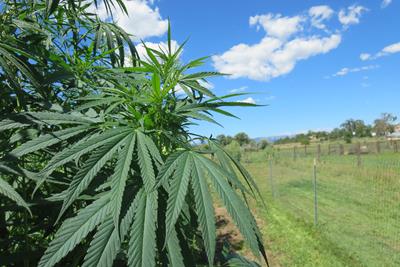
Thursday January 19, 2017
 Education
Education
Forget the apple tree. George Washington loved hemp. So Did Thomas Jefferson. Both of America’s founding fathers cultivated it on their land. As far back as 1607, the plant was produced in Virginia, and from 1619, all planters in the colony were required to grow it by law. Hemp was used in the paper on which the Declaration of Independence was printed, the cord around the U.S. Constitution was reportedly made from the plant, and the first U.S. flag was comprised of hemp. Hemp is an all-American plant, its cultivation and use once a staple of the American economy, its history and application closely tied to the history of the nation.
Industrial hemp has been banned for years by the federal government, the once major U.S. crop now guilty by association and deemed an outlaw alongside its psychoactive cousin, cannabis. But change is in the air. In recent years, Oregon, North Dakota, Vermont, Montana and West Virginia have backed the legal cultivation of hemp. The Kentucky Department of Agriculture approved 12,800 acres for hemp planting in 2017, tripling the number of acres from the previous year’s figures (in the 1940's, hemp fields abounded in Kentucky, and the hemp trade in the U.S. was more profitable than corn and soya beans).
Hemp is a hugely versatile crop. It can be used to manufacture paper, textiles, fuel, food, rope and plastics. Will the U.S. rekindle its love affair with hemp, or will lawmakers and Big Brother industries like oil and construction stamp out hemp’s possible resurgence? Hemp’s multiple applications make it something of a wonder crop, and wonder crops take money away from other industries. So just how versatile is hemp?
Biofuel
In 1941, long before biofuel stations became a hippie niche, American industrialist Henry Ford produced a car whose engine could be powered by hemp fuel. Hemp can be used to create bioethanol and biodiesel. While some studies have downplayed biofuels as a solution to climate change, hemp biofuel is environmentally safer to produce than sugar beet, palm oil or corn. In addition, industrial hemp grows in any temperate to hot climate, and it leaves the soil in better condition than when it was planted (hemp farming puts nitrogen back into the ground). Hemp is a cheap substitute for petroleum, an alternative fuel crop that takes money away from oil and gas companies.
Building Material
Plant-based construction materials build healthy, zero-carbon buildings and reduce reliance on scarce or expensive resources. When mixed with a lime-based binder, the woody core of the industrial hemp plant can be made into timber frame panels that provide a strong barrier to heat loss and are resistant to fire, mold and decay. Building materials such as stucco, fiberboard, carpet, cement blocks and insulation can also be made out of hemp. While the use of natural materials such as hemp and straw have been in decline for years, a heightened awareness of renewable energies and climate change has led to a rising interest in plant-based building materials.

Example of an industrial hemp field, with a rare sighting of the Colorado Pot Guy
Clothing and Fabric
Is sustainable apparel the wave of the future? According to California entrepreneur and conservationist Rob Jungmann, everyone will be in a hemp t-shirt by 2020, at least that’s the tagline of his hemp clothing company, Jungmaven. Hemp is comfortable and becomes softer each time it’s washed. It’s also eco-friendly. Hemp takes less water and produces more plants per acre than cotton. Moreover, hemp returns nitrogen to the soil, while cotton depletes the land of nutrients, especially if it’s not rotated with other crops. In California, cotton farmers have been struggling to maintain yields because of the prolonged drought. Is hemp cultivation the solution to the state’s parched soil?
Paper
Paper is dirty to produce. Some estimates suggest that paper manufacturing creates 220 million pounds of toxic pollution and three times more carbon than aviation (or about 10% of global carbon emissions). Hemp paper, on the other hand, is better for the environment. It’s naturally acid free and doesn’t become yellow or brittle. Hemp paper can be whitened with hydrogen peroxide and doesn’t have to be bleached with chlorine. Forests don’t need to be cut and cleared to produce it.
Food
Hemp has long been touted as a superfood, a lesser-known cousin of nutrient-rich miracle foods such as chia seeds, coconut oil, avocado, and pomegranate. Hemp seeds are high in protein and contain the perfect ratio of omega fats 3, 6, and 9. Rich in magnesium, potassium and dietary fiber, hemp seeds help with eczema, asthma, heart disease and high blood pressure. Some evidence suggests that hemp seeds and hemp oil improve memory and combat depression.
Hemp is one of the world’s fastest growing sustainable energies. More than 30 countries allow farmers to cultivate industrial hemp. Still, the plant that was once as American as apple pie is shackled to outdated federal policies. It’s high time for the U.S. to join the agricultural mainstream.







